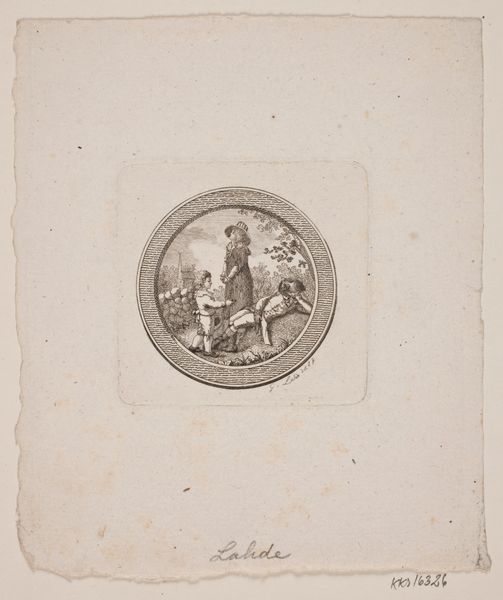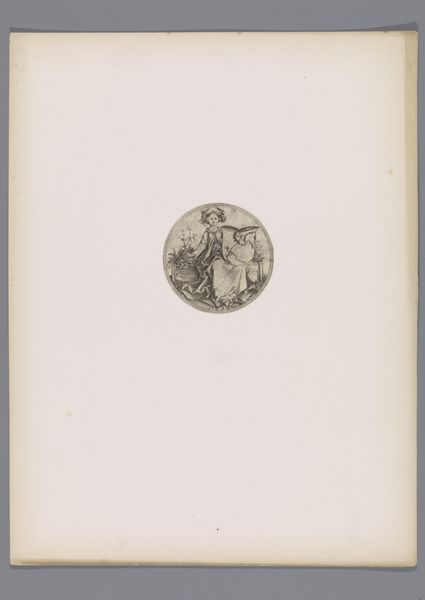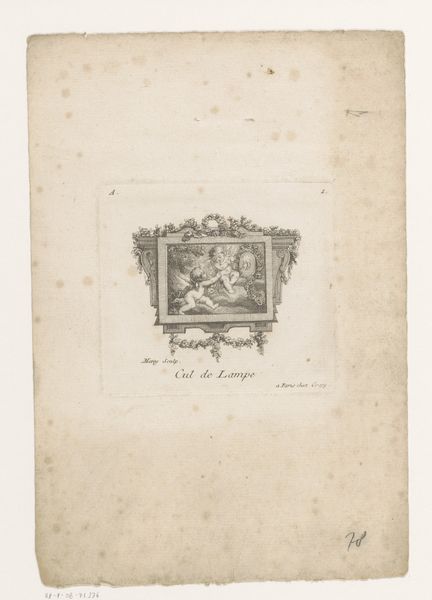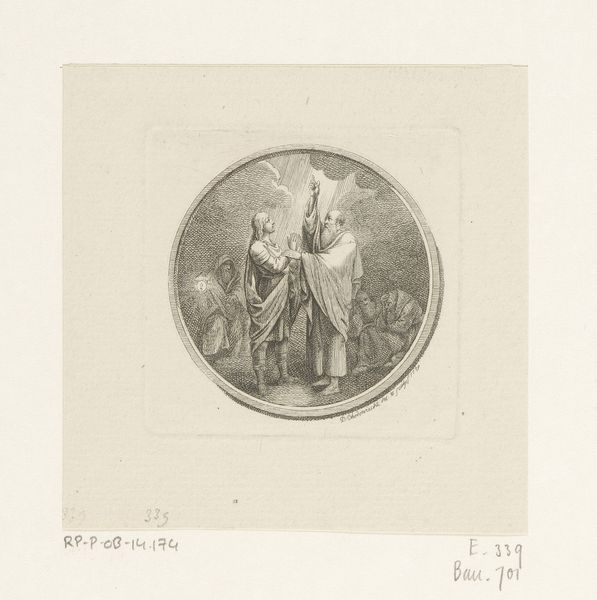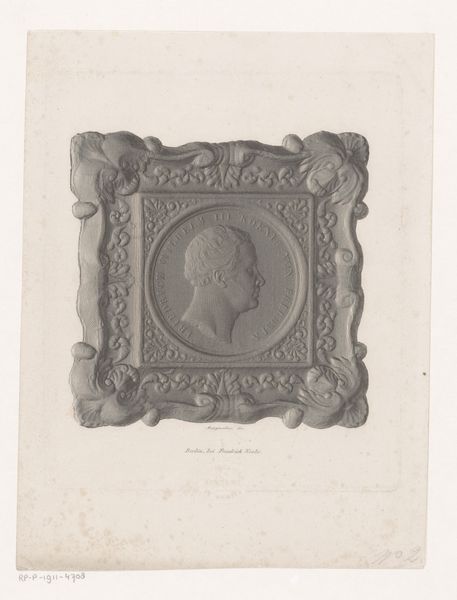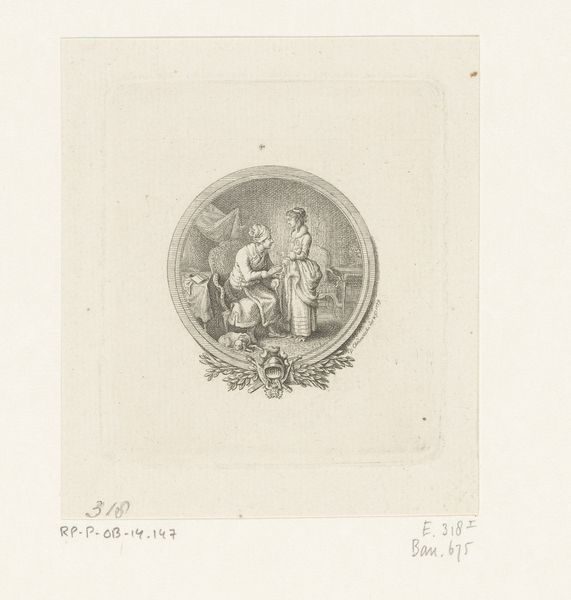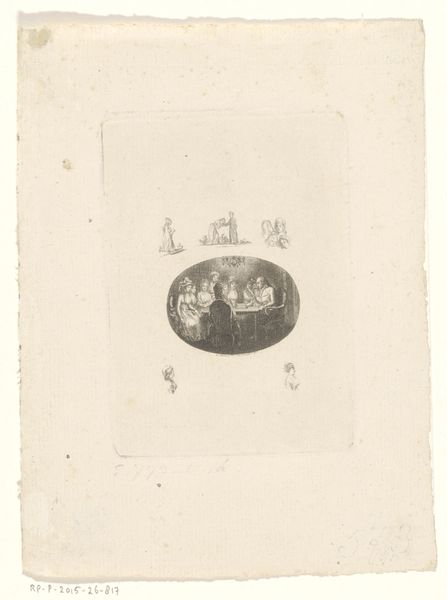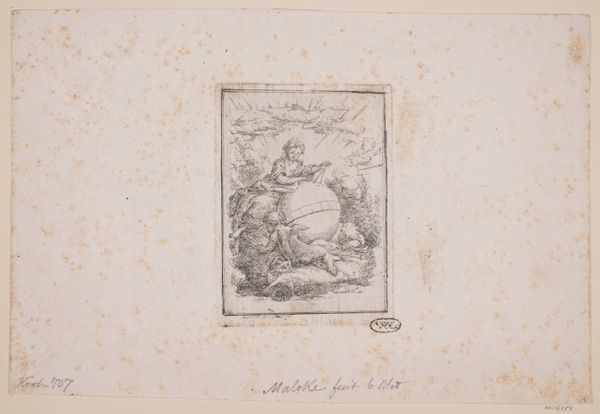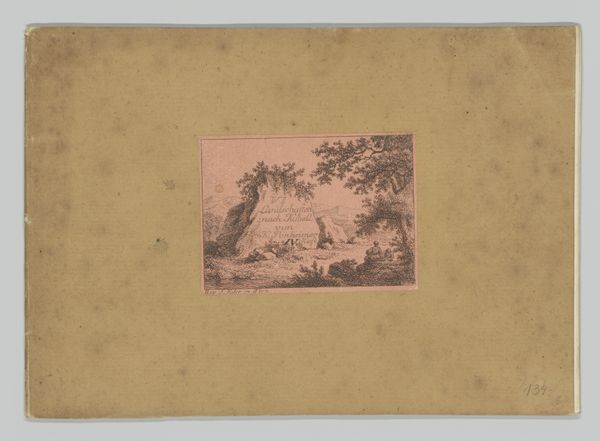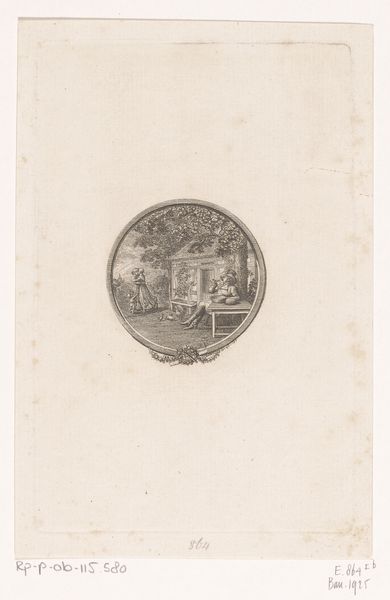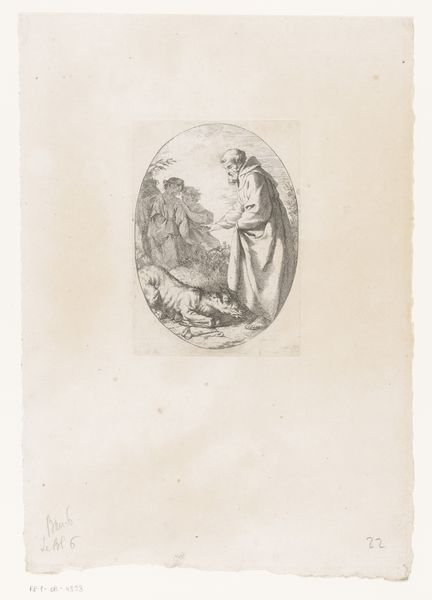
Titelvignet til J. G. Müller "Komiske Romaner" 1787
0:00
0:00
Dimensions: 48 mm (height) x 66 mm (width) (plademaal)
Curator: This is Georg Christian Schule’s “Titelvignet til J. G. Müller 'Komiske Romaner'” from 1787. It is an etching and engraving. Editor: The circular vignette creates an immediate sense of intimacy, like peering through a looking glass into a private world. There's something quite romantic and isolated about it. Curator: It served as the title vignette for J.G. Müller’s comic novels. Etchings like these were common in book production; this allowed for relatively inexpensive, easily reproducible illustrations, influencing how widely stories could circulate. The Romantic style is also crucial: the integration of landscape grounds the figure, the rider, in a very distinct material reality. Editor: Right, the choice of etching, an easily disseminated medium, brings into question the audience. This piece suggests a burgeoning readership that wants art accompanying literature and also gives insight to Romanticism’s preoccupation with rural life and the individual’s place within nature. I’m curious about how the engraver, Schule, worked—did he primarily do vignettes, or did he also work on larger scale paintings? Curator: He focused on illustrations, working often with themes that blended the aesthetic sensibilities of Romanticism with the more prosaic needs of commercial printing, impacting the wider circulation and reception of those Romantic ideals in his time. There is a directness because these books were a widely available, purchasable product. The availability speaks to the culture surrounding it and the culture that helped give the Romantic Movement relevance. Editor: It’s interesting to consider the labor involved in the book itself. Not only from the writing, but to the image-making, to the printing. What was once something rare and highly-sought after is starting to trickle into popular culture. Curator: Indeed. The social context is vital to understand how seemingly high art motifs permeate wider audiences, thanks to processes like etching and its integration in literature accessible to the burgeoning middle class. Editor: Thinking about the accessibility changes my initial sense of isolation. Instead, I’m seeing an invitation. The lone rider welcomes us to participate in this constructed landscape and perhaps more importantly the new perspectives in these popular novels. Curator: A fascinating reminder of how context shapes our understanding of materials and processes. Editor: Precisely. It all feeds into the way this little world touched the big one.
Comments
No comments
Be the first to comment and join the conversation on the ultimate creative platform.
